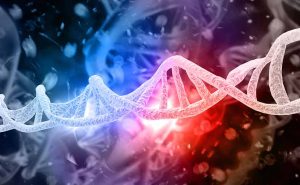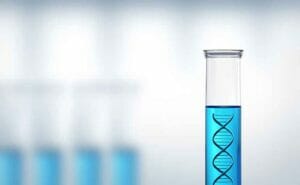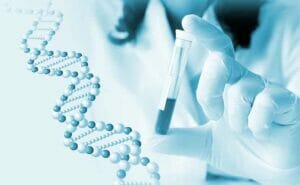Down syndrome is also called Trisomy 21 because there is one more chromosome in the chromosome 21 than normal. In this article, our doctor explains the characteristics and testing procedures for Down syndrome (Trisomy 21), the most common chromosomal abnormality in newborns.
- What is Down Syndrome (Trisomy 21)?
- Characteristics of Down Syndrome
- Disability of Down syndrome
- Effects of Down syndrome on IQ and Mental Development
- What are the chances of inheriting Down syndrome?
- What is the Relationship between Old Age Birth and Down Syndrome?
- Down Syndrome and Age at Birth
- How to be tested for Down Syndrome
- What Characteristics can be seen from the Ultrasound?
- Hiro Clinic NIPT can also Test for Down syndrome Alone
What is Down Syndrome (Trisomy 21)?
At present, there are 80,000 people with Down syndrome in Japan, and the occurrence rate is reported to be 1 in 700. You may often hear information that the probability of Down syndrome increases with older age of birth, or that it is inherited. The following is a detailed explanation of how early in the pregnancy you can detect Down syndrome, what characteristics can be seen, and how to detect Down syndrome from ultrasound scans.
Do you know what Down Syndrome is in the first place?
Down syndrome (Trisomy 21) is a chromosomal abnormality that appears when there is one more chromosome 21 than normal, resulting in intellectual disability and delayed physical development.
Down syndrome was named after researcher Dr. John Langdon Down, who first reported the disease in the late 19th century.
Chromosomes are found in cells and are filled with DNA and other genes.
Humans have 46 chromosomes, including two each of autosomes 1-22 and two sex chromosomes.
A chromosome abnormality with an extra chromosome is called trisomy, and Down syndrome is also called trisomy 21 because it has one extra chromosome, chromosome 21.
Down syndrome (trisomy 21) is divided into three types according to chromosome structure: standard, translocation, and mosaic.
Human chromosomes are 23 pairs or 46 chromosomes, paired in twos. This is called “trisomy 21” because an extra chromosome 21 (trisomy 21) is caused by a failure of separation for some reason or by translocation (a chromosome moves to a specific site on another chromosome and joins it), which does not normally occur.
Note that for trisomy 18, 95% of cases will result in spontaneous abortion with a survival rate of 5-10% over the age of 1 year, and for trisomy 13, half of the cases are clinically severe and survive less than 1 month and less than 1 year. Most cases of chromosome aberrations result in early miscarriage because of the more significant genetic information in the other chromosomes.
Types of Down Syndrome
Depending on the chromosome structure, there are standard, translocation, and mosaic.
Standard
It accounts for about 95%* of all cases. It is caused by the chromosomes derived from the father and the chromosomes derived from the mother not separating properly, resulting in an increase in chromosome 21.
In most cases, there is no problem with the chromosomes of the parents in the standard type.
Translocation
The translocation type is rare, accounting for about 3%* of all cases. Unlike the standard type, a translocation is a condition in which part of the 21st chromosome of one of the parents is attached to the other chromosome (translocation).
It is reported to be caused by one of the parents carrying a translocated chromosome.
Mosaic
With an incidence of approximately 2%*, this mosaic type is very rare.
The disease is named for the mixture of cells with chromosomal abnormalities and normal cells.
In some cases, depending on the percentage of those cells, the symptoms as Down syndrome may be less severe than in other types.
Down syndrome is known to be the most common trisomy in newborns, born at a rate of 0.1-0.2% (approximately 1 in 500-1000.
Because it is caused by an abnormality in human chromosome structure, Down syndrome is not found in other mammals.
A cat with a face that fits the characteristics of Down syndrome was previously the focus of attention in international news.
Cats are also born with chromosomal abnormalities in very rare cases, but this is different from Down syndrome in humans.
A case of trisomy 22 in a chimpanzee was reported in the U.S. in 1969, and a second case of the same syndrome was reported in Japan in 2017. The chromosome 22 of the great apes corresponds to the 21st chromosome of humans, so it was confirmed as Down syndrome (trisomy 21). Research is still being conducted on Down syndrome in chimpanzees, which are the most closely related to humans.
*Source: Ministry of Health, Labour and Welfare – Life with Trisomy 21
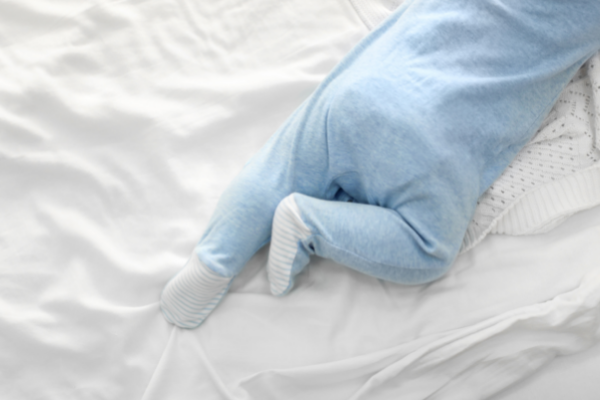
Down syndrome (Trisomy 21) is an abnormality
in the number of chromosomes
Down syndrome, the most common chromosome number abnormality, is a chromosome number abnormality that occurs when the 21st chromosome has three instead of the normal two and the genes do not function properly.
The probability of inheriting an abnormal number of chromosomes is very rare. Therefore, although Down syndrome is not uncommon, there is very little chance of inheriting it.
However, in the case of chromosomal structural abnormalities, Down syndrome due to heredity is considered to be rare. Even if there are no symptoms, there is a non-zero chance that one of the parents has a translocated chromosome, which can cause Down syndrome.
Numerical Abnormalitiy (Abnormal number of chromosomes)
- Trisomy (Down syndrome), in which originally set of two chromosomes become three
- Monosomy, in which a set of two chromosomes is replaced by a single chromosome
- Triploidy/triploidy in which each set consists of three chromosomes resulting in 69 chromosomes
Structural Abnormality (Abnormality of Chromosome Structure)
- Interchromosomal translocation
- Chromosome Inversions
- Partial deletions
- Duplication
- Ring chromosomes
- Isochromosome, etc.
Characteristics of Down Syndrome
Symptoms and physical characteristics of Down syndrome vary from person to person. The characteristics listed below are general characteristics that are often seen with postnatal Down Syndrome.
Face
A common physical characteristic is that the outer part of the face grows while the center of the face does not, which tends to result in small, suspended eyes, a low nose, and a small, broad, flat head.
It is difficult to diagnose at birth, and as the child grows, the following characteristics appear:
- Low nose
- Long tongue and upturned eyes
- Ears positioned low
- Small and round ears
- Excess skin on the back of the neck
- Overall flat facial features
- Thick lips and thick tongue
- Rounded cheeks
- Underdeveloped chin
- Soft body due to loss of muscle mass
- Small body size
- Straight and thin hair (not wavy)
In addition to these features, Down syndrome is often associated with symptoms of open mouth due to hypotonia of the muscles.
Hands and Fingers
Hands tend to be shorter and wider.
One of the characteristics of a down syndrome is the wrinkles on the palm of the hand. Instead of two lines running from both sides toward the middle, like the emotion and brain lines in palmistry, a single straight crease is seen across the palm.
As for the fingers, one less joint in the little finger, often bent inward, is another characteristic of Down syndrome.
There are also cases where the space between the thumb and forefinger of the foot is wider.
Height and Muscle Strength
It is reported that children with Down syndrome (Trisomy 21) are often short statured, especially in childhood.
Due to low muscle mass and low tone, their motor development is slow, and it often takes longer for them to learn to crawl and walk than normal children.
The risk of obesity is also higher than normal.
Disability of Down syndrome
Down syndrome is caused by an excess of one chromosome 21, resulting in the presence of three chromosomes. 21 is the smallest autosome, and the genetic information carried by chromosome 21 is considered to be small. Therefore, compared to other chromosomal abnormalities, the incidence of birth with major cardiac malformations is relatively low.
The degree of disability of Down syndrome varies from person to person. In most cases, Down syndrome is associated with impaired IQ development, delayed motor development, and a variety of other complications.
There is no probable medical cure for Down syndrome (Trisomy 21). However, there is a form of support known as “rehabilitation” that maximizes the abilities of children with Down syndrome. Rehabilitation is an approach that supports the independence of children with disabilities caused by Down syndrome by providing medical care and education in parallel.
Down Syndrome and Developmental Disorders
Developmental disabilities are defined in the Developmental Disabilities Support Act as Autism, Asperger’s syndrome and other pervasive developmental disorders, learning disabilities, attention deficit hyperactivity disorder, and other similar disorders of brain function whose symptoms usually manifest themselves at a young age, as specified by a Cabinet Order.
The above shows that there are many different types of developmental disabilities, and symptoms vary depending on the type of developmental disability. The developmental delay in language or IQ often causes problems in communicating with others. Down syndrome is classified as a developmental disorder caused by a chromosomal abnormality.
Down Syndrome and Mental Retardation/Intellectual Disability
Intellectual disability is generally defined as a disability that occurs in individuals under the age of 18 and is characterized by clear limitations in both IQ and adaptive functioning in three domains: conceptual (reading, writing, mathematics, logical thinking, etc.), social (interpersonal relationships, self-control, social judgment, etc.), and practical (behavior, money management, etc.).
The degree of intellectual disability (intellectual disability) found in Down syndrome varies from person to person. Even if the child is immature compared to his or her peers, a mild intellectual disability with an IQ of 51 or higher will allow the child to communicate and lead a somewhat independent life.
In addition, Down syndrome by itself does not have a clear classification of severe or mild, but in most cases it is determined by intellectual disability and risk of complications.
In general, patients with Down syndrome who have mild intellectual disability and low risk of complications are considered to have mild Down syndrome, while those with intellectual disability and high risk of complications are considered to have severe Down syndrome.
Effects of Down syndrome
on IQ and Mental Development
Down syndrome can also affect IQ and mental development. Common effects include the following:
Language Development and IQ in Down Syndrome
IQ (Intelligence Quotient) is difficult to generalize due to individual differences, but it is reported that the average IQ of a child with Down syndrome is about 50 when the IQ of a normal child is 100.
In terms of growth and development, the child may show delayed language development and lack of aggressiveness due to difficulty with speech due to decreased muscle mass, slow language development, often with slurred or inflected speech, and in terms of behavior, lack of attention and autistic behavior.
- Attention-deficit/hyperactivity disorder
- Autistic behavior (e.g., repeating the same thing over and over)
Down syndrome is thought to increase the risk of depression in both childhood and adolescence, and it is expected that education and other interventions at an early stage can improve an individual’s ability to cope with the syndrome.
Personality of Children with Down Syndrome
Just as the IQ (intelligence quotient) of children with Down syndrome varies from person to person, the personalities of children with Down syndrome also vary. In general, the personalities of children with Down syndrome are often thought of as “calm,” “gentle,” or “stubborn”. However, the personality development of children with Down syndrome is no different from that of normal children, and the mother’s and guardian’s views on education and child-rearing, as well as their living environment, play a large role in determining their personalities.
Public Support System and Social Advancement of Down Syndrome
Patients with Down syndrome have access to a variety of support services. The details of support services vary from municipality to municipality, including the national, prefectural, and municipal governments. Some support services may not be available depending on the degree of disability of the Down syndrome or the income of the guardian, so you should check with your local government.
In addition to public support, there are many welfare organizations, support companies, and parent associations. In addition, Individuals with Down Syndrome are now seen both in Japan and abroad as models in the fashion industry. In today’s information society with the Internet and social networking services, the perception of Down syndrome has changed compared to the past.
Visual and Auditory Cognitive Processing
Many children with Down syndrome seem to be good at visual cognition, compared to the slower development of language skills.
Therefore, it is easier to communicate with gestures, pictures and photos than with words.
Risk of Complication/Disease
Down syndrome (Trisomy 21) has been noted not only for its physical and IQ characteristics, but also for its risk of complications and diseases.
Cardiovascular Diseases
Among children with Down syndrome, about half are at risk for heart disease.
In most cases, a condition called endocardial floor defect or ventricular septal defect occurs due to the lack of properly formed walls dividing the heart into four chambers.
Relating to Digestive System
Down syndrome (Trisomy 21) is often associated with gastrointestinal disorders such as duodenal obstruction and cloacal anus (rectoanal malformation), and in some cases, depending on the baby’s symptoms, surgery may be required immediately after birth.
Many children also have difficulty chewing food due to low muscle tone, slow development of feeding function, and a small upper jaw.
Other Complications
Other complications and diseases that may appear include:
- Mild to moderate intellectual disability
- Sensory (hearing loss, strabismus, cataracts, etc.)
- Endocrine (diabetes, obesity, under/hyperthyroidism, etc.)
- Stress-induced depression and early regression after adolescence
- High rate of Alzheimer’s disease after age 40
- Hearing loss / Otitis media / Obstructive apnea
- Cataracts/Strabismus
- Urinary dysfunction
- Thyroid dysfunction
- Dislocation
- Convulsion
Other studies have shown that it also causes an increased risk of diabetes and leukemia.
Common Causes of Death in Down Syndrome
In the past, Down syndrome was thought to have a short life expectancy. However, as medical technology improved, complications could be treated and the life expectancy increased significantly, and the average life expectancy of individuals with Down syndrome today is reported to be around 60 years.
The most common causes of death in Down syndrome are heart disease, leukemia, and stroke.
The most common causes of death among children born with Down syndrome are congenital malformations, pneumonia, infectious diseases, and heart disease, while among adults (after the age of 20), cerebrovascular diseases such as stroke are the most common cause of death.
All of this suggests that early detection of complications and early treatment are important for maintaining the health of individuals with Down syndrome (Trisomy 21.
What are the chances of inheriting Down syndrome?
Chromosome abnormalities are quite common. There are a total of 46 human chromosomes, with 23 inherited from each of the father and mother. Chromosome abnormalities are divided into two types: those that result from an abnormality in the number of chromosomes and those that result from an abnormality in the structure of chromosomes.
Likelihood of inheriting Down Syndrome from Parents
As mentioned above, there are 23 chromosomes from the father and 23 from the mother, for a total of 46 chromosomes. In order to maintain these 46 chromosomes, the sperm and egg must each have 23 chromosomes before fertilization. However, when the sperm and egg undergo the 23-chromosome separation process, there are cases in which, due to some abnormality, two chromosomes with chromosome 21 are placed together in the sperm and egg.
Down syndrome (Trisomy 21) is a disease caused by a genetic abnormality. In the case of chromosome disjunction, the child does not inherit the genetic abnormality even if both parents have it. Therefore, Down syndrome can be considered a mutation that occurs during the growth process of reproductive cells such as sperm and eggs. Chromosome disjunctions are also related to the older age of the mother.
It is reported that the quality of eggs declines as the mother’s age increases, and the older the pregnancy and delivery age (35 years or older), the higher the probability that the fetus will have Down syndrome or other chromosomal abnormalities. The probability of developing Down syndrome does not depend on whether or not the woman has given birth before.
These factors suggest that the likelihood of inheriting Down syndrome (Trisomy 21) from both parents is very low. Even if there is no genetic abnormality in the parents, there is a possibility that a child may be born with Down Syndrome.
However, there is no possibility that translocated Down syndrome (21 trisomy) can be triggered by one of the parents having a translocated chromosome.
Translocation type is Down Syndrome (Trisomy 21) due to Heredity
Most Down syndrome cases are chromosome mutations that occur during the reproductive process and are considered to be unrelated to heredity. However, there are rare cases of translocated Down syndrome that are caused by heredity.
Translocated Down syndrome is caused when one of the three chromosomes, chromosome 21, is attached to another chromosome. The translocated chromosome is inherited from either the father or the mother, and both parents may have the translocated chromosome even if they do not show any symptoms (carriers).
If one of the parents is a carrier of a translocated chromosome, the probability that the fetus will have Down syndrome (Trisomy 21) will be somewhat higher, regardless of maternal age.
Possible Inheritance of Down Syndrome from a Relative
Among the questions we receive from our patients, we are often asked, “I have a relative with Down syndrome, what are the chances of inheriting the syndrome?” Many of them are concerned about the possibility of inheriting Down syndrome from a relative.
We have heard of many cases where couples are hesitant to marry (or are opposed to marriage) because one of their families has Down syndrome. However, Down syndrome is a disease caused by an abnormal number of chromosomes. Therefore, with the exception of the translocation type, the possibility of inheriting Down syndrome from both parents is considered to be extremely small.
These factors make it very unlikely that Down syndrome will be inherited, even if one of your relatives has Down syndrome.
Possible Inheritance from a Cousin with Down Syndrome
Many patients say that they are concerned about possible genetic inheritance of Down syndrome because they have a cousin who is the same age as themselves with Down syndrome.
There is no possibility of Down syndrome being caused by heredity, such as relatives or cousins.
Possibility of Down syndrome in Siblings
It has been reported that if the first child has Down syndrome, the incidence of chromosomal abnormalities in the second child is slightly higher, not only in the translocation type but also in the standard type, although this is partly due to the older age of the mother. For these reasons, the number of cases in which both siblings have down syndrome is not zero. In addition, many people undergo NIPT (New Non-invasive Prenatal Testing) because their first child has Down syndrome.
What is the Relationship between Old Age Birth and Down Syndrome?
Older age birth is defined as having a baby after the age of 35.
The eggs that a woman produces in her lifetime are already in her ovaries when she is born, and once a month a selected egg is ovulated. The longer the egg remains in the ovary, the more it ages, and the more damage is done to the chromosomes and DNA that produce genetic information, resulting in a decrease in the ability of cells to divide, and the occurrence of chromosomal abnormalities.
Therefore, the probability of having a child with Down syndrome also increases with age: 1 in 1667 at age 20, 1 in 952 at age 30, 1 in 385 at age 35, 1 in 106 at age 40, and 1 in 30 at age 45.
It is also reported that not only women but also men begin to have an increasing number of sperm with chromosomal abnormalities after the age of 40. Millions of new sperm are produced with each ejaculation, and it is said that during this process, errors can easily occur in the genetic code, resulting in the occurrence of chromosomal abnormalities.
Down Syndrome and Age at Birth
The frequency of Down syndrome births has been found to be related to the mother’s age at birth, as shown in the table below.
Mother’s Age at Birth Frequency of Births with Down Syndrome 20 1 in 1,667 25 1 in 1,250 30 1 in 952 31 1 in 909 32 1 in 769 33 1 in 625 34 1 in 500 35 1 in 385 36 1 in 294 37 1 in 227 38 1 in 175 39 1 in 137 40 1 in 106 41 1 in 82 42 1 in 64 43 1 in 50 44 1 in 38 45 1 in 30 46 1 in 23 47 1 in 18 48 1 in 14 49 1 in 11 Source: Ministry of Health, Labour and Welfare, Report of the Study Group on the Modality of Specific Treatment Support Programs for Those Suffering from Infertility, Reference Material 14. Age of Women and Frequency of Chromosome Abnormalities in Children
It is suggested that the reason for the increased frequency of Down syndrome births at older age is that chromosome separation does not occur normally during the oogenesis process as the mother ages. However, the mechanism of Down syndrome is not yet fully understood, and research is still in progress.

How to be tested for Down Syndrome?
The testing methods for evaluating Down syndrome are different for prenatal and postnatal testing.
What Characteristics can be seen from the Ultrasound?
Ultrasound Examination
Ultrasound is used to examine the growth of the fetus and to check for abnormalities, and is generally performed at 10-14 weeks (early ultrasound), 18-20 weeks (mid-term ultrasound), and 27-29 weeks (late ultrasound) of pregnancy.
There are two examination methods: transvaginal ultrasound (probe inserted into the vagina) and transabdominal ultrasound (probe placed on the surface of the abdomen.
There are three types of ultrasound examinations: 2D ultrasound, which shows a cross-sectional image of the body and observes the state of bones and internal organs; 3D ultrasound, which reconstructs and colors the 2D information by computer to show a three-dimensional image; 4D ultrasound, which shows a 3D echo as a moving image; and color ultrasound, which shows a color image of blood flow from a black and white 2D echo to show the state of blood flow in the heart and umbilical cord.
Characteristics of Down Syndrome on Ultrasound Examination
Typical characteristics seen in fetuses with Down syndrome at the time of examination include the following:
NT (Nuchal Tract Edema ) – A black space may be seen at the back of the fetus’ neck where lymph fluid has accumulated, and the thicker the space (the standard is 3.0 mm or more), the higher the probability of Down syndrome or risk of heart disease compared to babies without thick NT.
Fetuses with trisomy or other abnormalities tend to have larger NTs than normal fetuses, but NTs are found in all normal fetuses and may be a normal chromosome even if it is thicker than normal or may be a chromosomal abnormality even if it is not visible.
Also, since NT values can easily change depending on whether the fetus is facing sideways or at different angles, the largest value measured twice or more is used to calculate the risk of chromosome abnormalities.
Nasal Bone – The nasal bone is not visible in 1-3% of fetuses with healthy chromosomes and 60% of fetuses with Down syndrome have a defective or hypoplastic nasal bone.
Venous blood flow – The flow of blood vessels from the umbilical cord into the baby’s abdomen to the heart is measured to check for regurgitation. Reflux is found in 3% of fetuses with normal chromosomes and 65% of those with Down syndrome.
Tricuspid Valve Blood Flow – The blood that passes from the right atrium of the baby’s heart to the right ventricle is measured to see if there is any regurgitation. Regurgitation is found in 1% of fetuses with normal chromosomes and in 55% of those with Down syndrome.
Length of Limbs – Down syndrome can cause limb shortening as a complication. Due to chromosomal abnormalities, the limbs are characterized by shorter length compared to the torso, which may be seen on ultrasound images.
In the case of an early examination at or before 11 weeks, the fetus may be too small or the organs may not be developed enough to be observed by ultrasound, and the abnormality may be overlooked.
Although it is possible to determine the possibility of chromosomal abnormalities by combining the values of these tests, ultrasound is not a definitive test and cannot be used alone to confirm that the child has Down syndrome. It is necessary to confirm the presence of Down syndrome by amniotic fluid testing, etc.
The amniotic fluid testing is often done around the 16th or 17th week of pregnancy, and the results are available in about two weeks, so by about the 20th week of pregnancy, it will be determined whether or not the baby has Down Syndrome.
An ultrasound examination cannot reveal Down syndrome, but it can determine the possibility of the syndrome.
Although testing is not mandatory, there is also a law that states that in case the pregnancy fails, the mother must undergo surgery by less than 22 weeks (21 weeks and 6 days) of pregnancy, according to the Maternal Protection Act.
We recommend that you consult with a doctor specializing in Down syndrome to relieve some of the anxiety about what to do if you have Down syndrome, and that you get tested within the prescribed number of weeks.
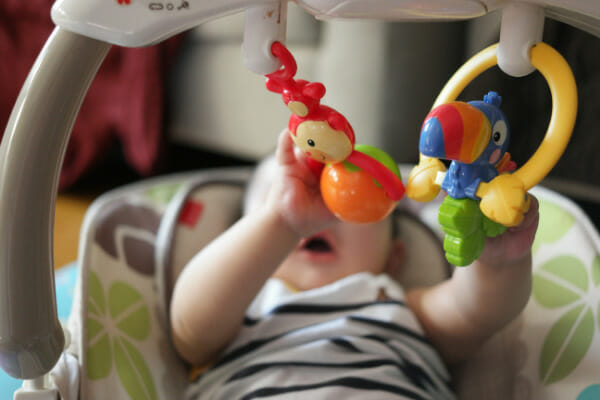
What is Prenatal Testing (Prenatal Diagnosis)?
Prenatal Testing (Prenatal Diagnosis) is a test to check for congenital diseases caused by chromosomal abnormalities in the fetus in the mother’s abdomen. It is important to familiarize yourself with each testing method, as there is a risk of miscarriage with some testing methods.
Quattro Test (Multiple Marker Serum Sreening Test)
A quattro test is a type of blood test. It measures four different markers in the mother’s blood.
- β−hCG
- Unconjugated Estriol
- Inhibin
- Alpha-fetoprotein
Although the Quattro test is not covered by insurance, it is relatively inexpensive. The accuracy, however, is not so high at 80%, and it is also noted that the probability of false positives is 5%.
NIPT(New Non-invasive Prenatal Testing)
NIPT is performed using only the blood of the mother. It is said to cause almost no direct invasion (damage) to the fetus, and for Down syndrome, it is considered a highly accurate method with a sensitivity and specificity of 99.9%.
Some NIPT facilities have age restrictions or other requirements to be eligible for undergoing NIPT, so it is necessary to find out in advance if your conditions match.
The Quattro test and NIPT are screening tests (non-definitive tests) that detect the possibility of congenital disease risk due to chromosomal abnormalities in the fetus. For a definitive assessment, an amniotic fluid test should be performed.
Amniotic Fluid Testing (Amniocentesis)
If a blood test indicates the possibility of Down syndrome, an amniotic fluid test is necessary to confirm the diagnosis. An amniotic fluid test can be performed from the 15th to 16th week of pregnancy.
Using ultrasound, a needle is inserted into the mother’s abdomen and a sample of amniotic fluid is obtained while examining the position of the fetus and the condition of the amniotic fluid. Chromosomes are then examined from fetal cells contained in the amniotic fluid.
Since the cells are cultured for analysis, it takes several weeks until the results are determined. Also, because of the higher burden on the mother compared to blood tests, there is a 0.1-0.3% (1-3 in 1,000) chance of miscarriage, but this is not a particularly high risk compared to the probability of spontaneous miscarriage.
While NIPT is a test that examines the number of chromosomes and all chromosomal regions for partial deletion disorders based on the amount of genes, the amniotic fluid test examines the chromosomes themselves from the amniotic fluid.
Postnatal Down Syndrome Testing
If the newborn has not been tested for chromosomal abnormalities prior to birth or the results are not known, the diagnosis of Down syndrome is made by looking at the newborn’s facial and physical characteristics and by blood tests.
If a patient is diagnosed with Down Syndrome, it is important to have regular checkups on the newborn’s medical conditions and complications in order to minimize any worsening of the condition.
Hiro Clinic NIPT can also test
for Down syndrome alone
NIPT is a prenatal diagnosis that can be performed from the 10th week of pregnancy. Since the test only requires a blood sample from the mother, there is no direct invasion (damage) to the baby.
Hiro Clinic NIPT also performs NIPT for individual chromosomes. Therefore, it is possible to examine the risk of congenital diseases caused by chromosomal abnormalities only for Down syndrome (Trisomy 21).
At Hiro Clinic NIPT, there are no restrictions on the age of the pregnant woman, so anyone who is 10 weeks pregnant or later can undergo NIPT.
Pregnant women who have been denied for NIPT for twins at other NIPT facilities are also welcome to consult with us at Hiro Clinic NIPT. Hiro Clinic NIPT accepts twins and vanishing twins for NIPT.
NIPT can be performed with a blood test alone. However, when choosing a testing facility, it is important that it is staffed by a doctor who can explain NIPT and chromosomal abnormalities thoroughly.
Hiro Clinic NIPT has testing facilities throughout Japan and is staffed by Japanese Society of Obstetrics and Gynecology specialists, prenatal consulting pediatricians, and clinical geneticists who are experts in NIPT. If you have any questions about chromosomal abnormalities or Down syndrome, or if you were to test positive, please feel free to contact us with any concerns you may have about the transition to definitive testing.
If you would like to know more about NIPT or Down Syndrome (Trisomy 21), please feel free to contact Hiro Clinic NIPT staff for more information.
【References】
- Ministry of Health, Labor and Welfare – 21トリソミーのある方のくらし
- MSD Manual – ダウン症候群(21トリソミー)
- Developmental Nabi – ダウン症とは?症状や具体的な特徴、生活の様子など
- mofmo – 猫もダウン症になる?!ダウン症の特徴を持つ猫とはいったい?
- Medical Notebook – ダウン症とは?ダウン症の原因から経過まで
- Japan Center for Chronic Diseases of Childhood – ダウン(Down)症候群 概要
- Japanese Society of Child Neurology – 染色体異常は遺伝するのでしょうか。
Q&A
-
QWhat is Down Syndrome?Down syndrome (21 trisomy) is a genetic disorder caused by having one more chromosome 21 than normal. This often results in intellectual disability and physical developmental delays. The incidence of Down syndrome is estimated to be 1 in 700.
-
QWhat are the characteristics of Down syndrome?Some of the characteristics of Down syndrome include flat facial contours, small ears, a low nose, hung-up eyes, and low muscle tone. In addition, a single horizontal line is often seen on the palm of the hand, and the hands and fingers tend to be short.
-
QIs there a relationship between older age at birth and risk of Down syndrome?The risk of Down syndrome increases with maternal age. For example, a 35-year-old woman has a 1 in 385 chance of having a child with Down syndrome. This risk increases with age.
-
QIs Down syndrome (21 trisomy) inherited?Most cases of Down syndrome are caused by chromosome mutations, and the chance of inheritance is very low. However, in the case of a special type of Down syndrome called translocation, it can be inherited only if the parent is a carrier of the translocated chromosome.
-
QWhat tests should I take if I am possibly pregnant with a baby with Down syndrome?Prenatal tests include ultrasound, NIPT (new prenatal diagnosis), quattro test, and amniotic fluid test, etc. NIPT and amniotic fluid tests provide results close to a definitive diagnosis and should be discussed with a physician as needed.
-
QWhat are the risks of complications that a child with Down syndrome (21 trisomy) may have?Children with Down syndrome tend to have a higher risk of heart disease, gastrointestinal problems (such as duodenal obstruction), sensory problems (hearing loss, cataracts, strabismus), as well as thyroid dysfunction, leukemia, obesity, and Alzheimer's disease.
-
QWhat is the average life expectancy of a child with Down syndrome?Due to medical advances, the average life expectancy for people with Down syndrome has increased to around 60 years. However, regular health care is important due to the high risk of complications.
-
QWhen do you know the characteristics of a baby with Down syndrome?Features of Down syndrome often appear after birth, but prenatal testing can predict the likelihood of the condition. Echocardiography may reveal features such as edema at the back of the fetal neck (NT) and abnormal nasal bone formation.
-
QWhat are some ways to support the development of children with Down syndrome?Children with Down syndrome can benefit from support called “rehabilitation and education”. This is an approach that combines medical care and education in parallel to maximize individual abilities and support independence. It is also important to establish a support plan in cooperation with specialized medical and educational institutions.
-
QIs it possible for a child with Down syndrome to enter the workforce?Yes, many people with Down syndrome participate in society with support. With the support of welfare organizations, companies, and parent associations, and with appropriate education and training, many are active in their work and hobbies.
-
QWhat should parents be aware of when raising a child with Down syndrome?Children with Down syndrome may have low physical strength and immunity, so infection control and health management are important. It is also important to start developmentally appropriate support and medical care at an early stage to draw out individual abilities.
-
QDo complications of Down syndrome appear in all children?The incidence of complications varies from person to person. For example, heart disease is found in approximately 50% of children, but it does not appear in all children with Down syndrome. Early detection is possible through regular checkups by a physician.
-
QHow can you support the motor skills of a child with Down syndrome?Since muscle hypotonia and delayed motor development are common, it is effective to incorporate physical and occupational therapy. Gradually increase physical fitness and motor skills through an exercise program that is fun and enjoyable to participate in.
-
QCan Down syndrome be fully diagnosed prenatally?Prenatal diagnosis (NIPT and amniotic fluid testing) can be performed with a high degree of accuracy, but definitive diagnosis requires amniotic fluid testing and chorionic villus examination. It is important to proceed with these tests after careful consultation with a physician.
-
QDoes a child with Down syndrome need special dietary restrictions?Generally, no special dietary restrictions are required, but it is important to ensure a balanced diet due to the high risk of obesity. In addition, if there are digestive problems, it is advisable to seek guidance from a physician or nutritionist.
-
QWhat does early care and education for children with Down syndrome consist of?Early medical care and education includes training to promote language development, exercise therapy to support physical development, and play and learning to foster social skills. It is recommended to use support services provided by specialized institutions and local governments.
-
QWhat should I be aware of when choosing a daycare or school for my child with Down syndrome?It is important to choose an environment that is appropriate for the individual's developmental status and needs. Candidates include daycare centers that provide care for children with disabilities, special needs schools, or facilities that offer inclusive education. Please make the best choice through visits and consultations.
-
QCan a person with Down syndrome be active in sports or the arts?Yes, many people with Down syndrome have demonstrated talent in sports and artistic activities. Many are particularly good at visual cognition, so there are increasing examples of people who are active in painting, photography, and performing arts.
-
QWhat should be done if a baby with Down Syndrome has a sibling?It is important to provide age-appropriate explanations and seek support so that siblings understand Down syndrome as well. It is also important for parents to share enough love and time with the siblings so that they do not feel isolated.
-
QWhat can parents do to prepare their child with Down syndrome for the future?It is important to plan for the child's future life. Obtaining a disability certificate, using welfare services, making financial preparations, and utilizing legal assistance such as adult guardianship can enhance the child's independence and life support.
Down syndrome is also called Trisomy 21 because there is one more chromosome in the chromosome 21 than normal. In this article, our doctor explains the characteristics and testing procedures for Down syndrome (Trisomy 21), the most common chromosomal abnormality in newborns.
Article Editorial Supervisor
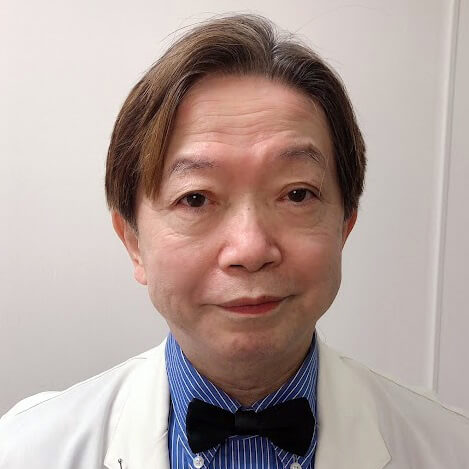
Dr. Masahiko Ito
Former Professor, University of Health and Welfare, Former Dean, Kashiwa Rehabilitation School, University of Medical Innovation, Member, Japanese Society for Gene Therapy and Japanese Society for Gene Research, etc.
Brief History
1974 – Entered the National Defense Medical College
1979 – Externship at the Department of Pediatrics, Faculty of Medicine, University of Sydney, Australia (Royal Alexandria Children’s Hospital)
1980 – Graduated from National Defense Medical College (1st class). Joined the Department of Pediatrics, National Defense Medical College
Worked at the Department of Pediatrics, National Defense Medical College Hospital, Self Defense Forces Central Hospital, Department of Neonatology, Hokkaido General Health Center for Children, and Mishuku Hospital of the National Public Service Mutual Aid Union
1989 – Research Fellow, Harvard Medical School, USA; Clinical Fellow, Tufts University School of Medicine, USA
1993 – Lecturer of Pediatrics, Saitama Medical College Junior College of Saitama Medical School
1994 – Lecturer of Pediatrics, Saitama Medical College
1997 – Associate Professor of Pediatrics, International University of Health and Welfare, Japan, working in the Department of Pediatrics, Sanno Hospital, Japan
2006 – Special Appointment Professor of Pediatrics, International University of Health and Welfare, International University of Health and Welfare (Pediatrics)
2008 – Honorary Director of Ihatove Hospital (Iwate Rosai Hospital)
2009 – Chairman, Hasuda Yotsuba Hospital, Kokoro no Kizuna Medical Corporation
2010 – Chairman, Ginza Cosmetic Surgery Clinic, Ginbikai Medical Corporation
2011 – Director of Shinkawa Hospital, Tsuruyokai Medical Corporation
2011 – Director of Chiba-Kashiwa Rehabilitation School of Medical Sosei University Educational Corporation
2014 – Director, Niigata Chuo Dialysis Clinic, Aoi Kai Medical Corporation
2016 – Deputy Director, Niigata Seiro Hospital, Aoi Kai Medical Corporation
2017 – Director, Higashi Katsushika Hospital, Fukujukai Medical Corporation
2018 – Director of International Department, AOI International Hospital, Aoi Kai Medical Corporation
Certifications
Doctor of Medicine
Registered as a care support specialist (Care Manager)
Board Certification in Allergology, Japanese Society of Allergology
Certified Industrial Physician by the Japan Medical Association
Board Certification in Pediatrics, Japan Pediatric Society
Passed the Japanese Society of Laser Medicine Medical Specialist Examination
Councilor of the Japanese Society of Pediatric Allergy
Councilor, Japanese Society of Pediatric Psychosomatic Medicine
Councilor, Japan-U.S. Medical Exchange Foundation
Councilor, Japan Internet Medical Association
Board member of the Japan Society for Computer Science
Chairman of the Board of Directors, Nightingale Spirit League
Chairman of the Board of Directors, NPO Defense Health Career Net
Advisor to the Medical Department of Kurokane Prison, Ministry of Justice, and other positions or activities
 中文
中文








